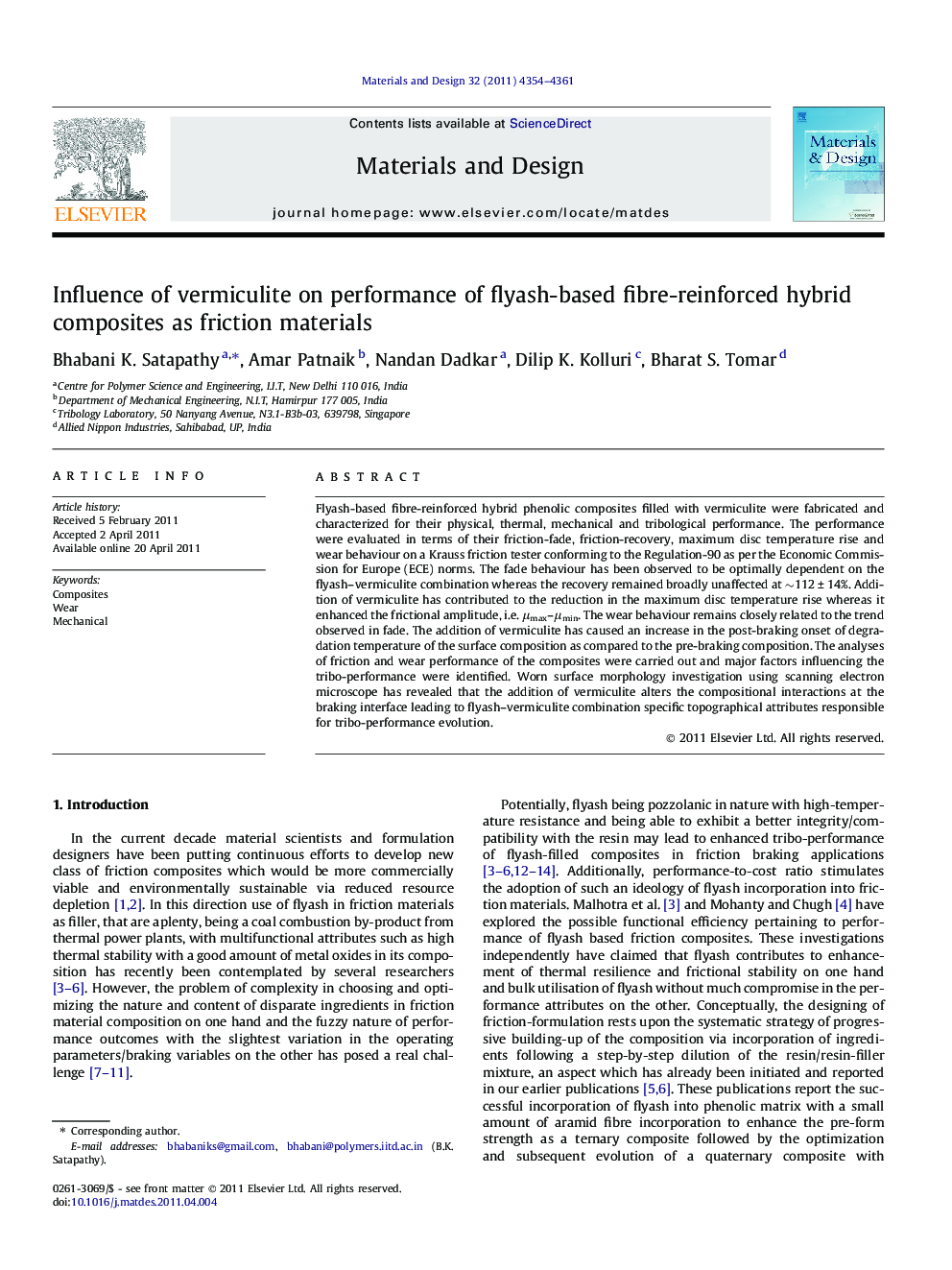| Article ID | Journal | Published Year | Pages | File Type |
|---|---|---|---|---|
| 831361 | Materials & Design (1980-2015) | 2011 | 8 Pages |
Flyash-based fibre-reinforced hybrid phenolic composites filled with vermiculite were fabricated and characterized for their physical, thermal, mechanical and tribological performance. The performance were evaluated in terms of their friction-fade, friction-recovery, maximum disc temperature rise and wear behaviour on a Krauss friction tester conforming to the Regulation-90 as per the Economic Commission for Europe (ECE) norms. The fade behaviour has been observed to be optimally dependent on the flyash–vermiculite combination whereas the recovery remained broadly unaffected at ∼112 ± 14%. Addition of vermiculite has contributed to the reduction in the maximum disc temperature rise whereas it enhanced the frictional amplitude, i.e. μmax–μmin. The wear behaviour remains closely related to the trend observed in fade. The addition of vermiculite has caused an increase in the post-braking onset of degradation temperature of the surface composition as compared to the pre-braking composition. The analyses of friction and wear performance of the composites were carried out and major factors influencing the tribo-performance were identified. Worn surface morphology investigation using scanning electron microscope has revealed that the addition of vermiculite alters the compositional interactions at the braking interface leading to flyash–vermiculite combination specific topographical attributes responsible for tribo-performance evolution.
► Study successfully demonstrates the possibility of designing fibre reinforced friction materials with vermiculite–flyash combination. ► Vermiculite has caused an increase in the post-braking onset of degradation temperature. ► Fade behaviour was found to be optimally dependent on the flyash–vermiculite combination whereas recovery remained broadly unaffected. ► Vermiculite caused reduction in the maximum disc temperature rise and enhanced the frictional amplitude, i.e. μmax–μmin. ► Static-friction, fade and recovery acted as major determinants for the overall friction performance whereas wear remained thermally activated.
